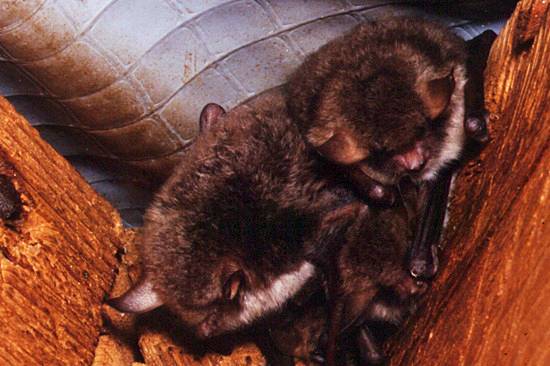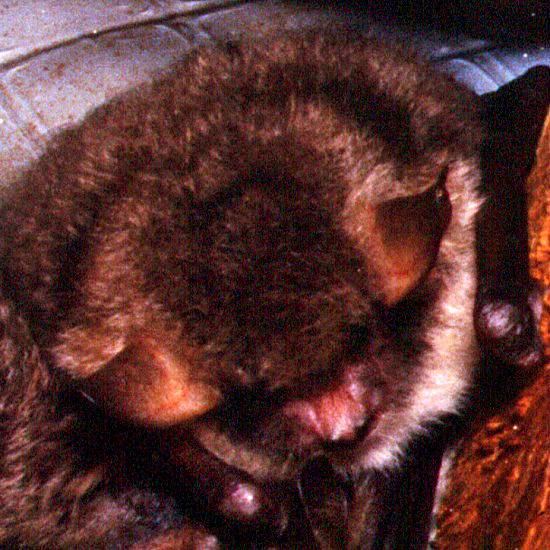Myotis brandtii - Brandt's Bat
Phylum: Chordata - Class: Mammalia - Order: Chiroptera - Family: Vespertilionidae

Brandt's Bats are small with pointed faces well covered in dark hair. Typically, they have a wingspan of 21 to 24cm, a head-and-body length of 38 to 50mm and weight of between 5 and 9gm - marginally larger on average than the closely related Whiskered Bat. Brandt's Bats are probably fairly plentiful in southern Britain.
Distinguishing Brandt's Bat from its relative the Whiskered Bat can be difficult - indeed, until 1970 they were not recognised as separate species.

Habitat and flight
You will see Brandt's Bat on the rivers and lakes of England and Wales, where they feed on moths and other flying insects. These smallish bats emerge at dusk. Often they can be seen seeking insect prey along the margins of rivers.
Roosts
Brandt's Bats are known to roost in buildings and in trees during in the summer months. They seem fond of crevices, and are sometimes found roosting in cavity walls and behind vertically hanging tiles. They have also been known to make use of bat boxes. Maternity colonies usually number between 20 and 60 bats.
Small groups of Brandt's Bats are known to retreat to underground roosting sites for the winter. They roost mainly in crevices, often in close proximity to other species such as pipistrelles.
Feeding habits
Brandt's Bats feed on small moths and other night-flying insects, generally seizing them in flight but occasionally picking them from the surfaces of leaves.
Please Help Us: If you have found this information interesting and useful, please consider helping to keep First Nature online by making a small donation towards the web hosting and internet costs.
Any donations over and above the essential running costs will help support the conservation work of Plantlife, the Rivers Trust and charitable botanic gardens - as do author royalties and publisher proceeds from books by Pat and Sue.